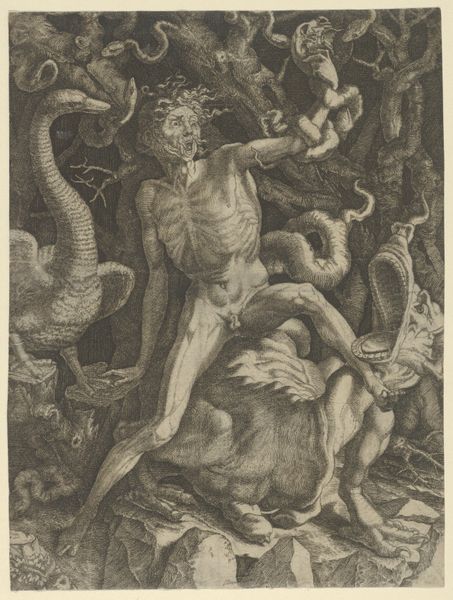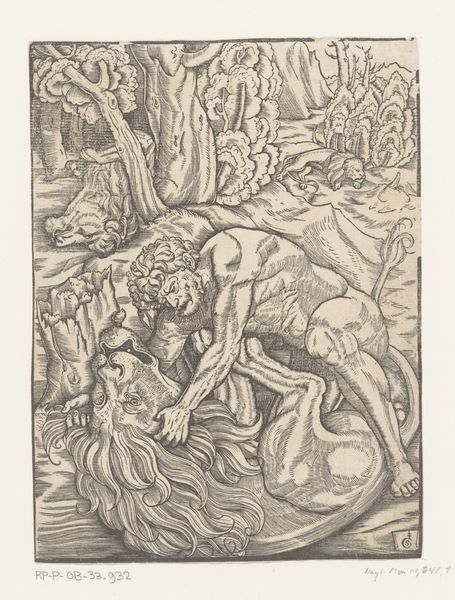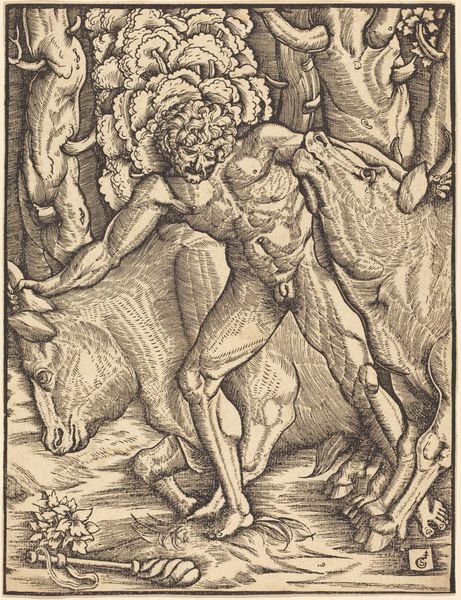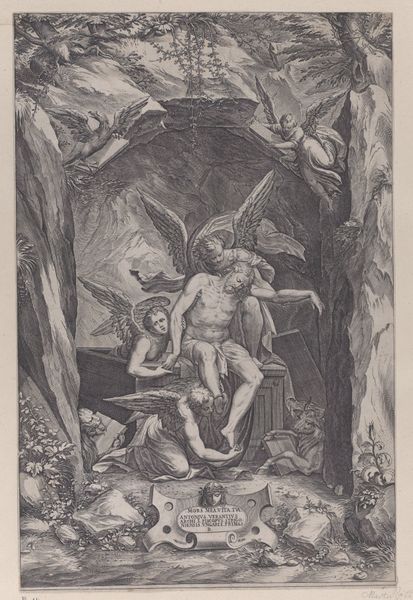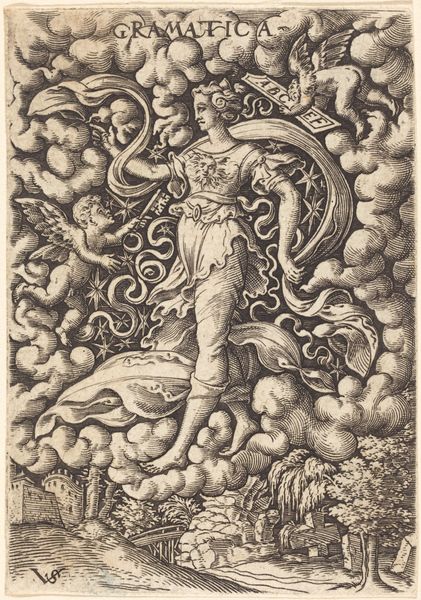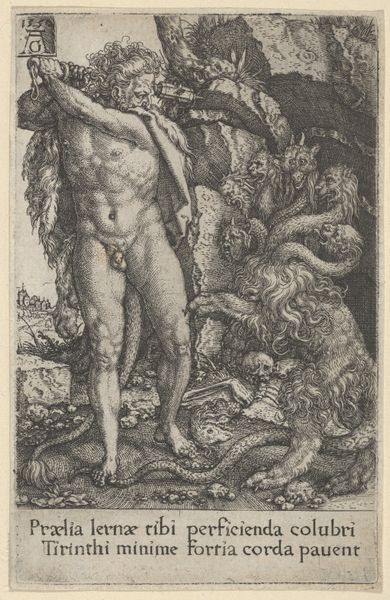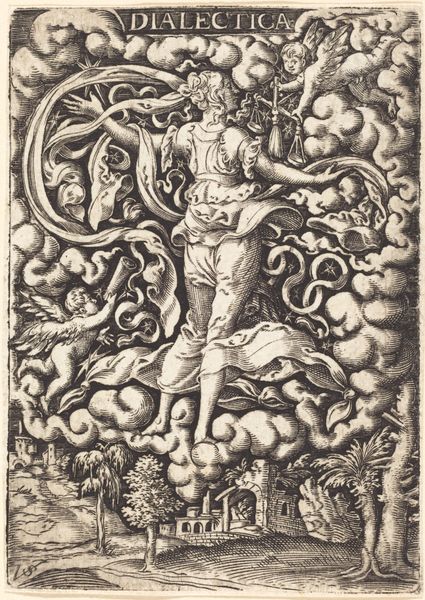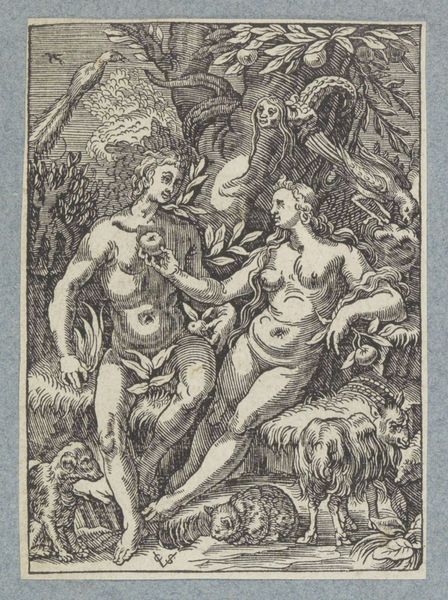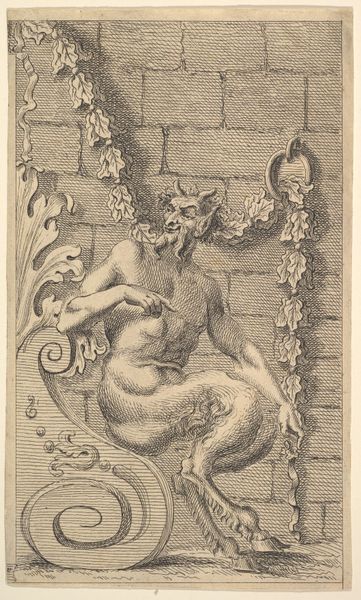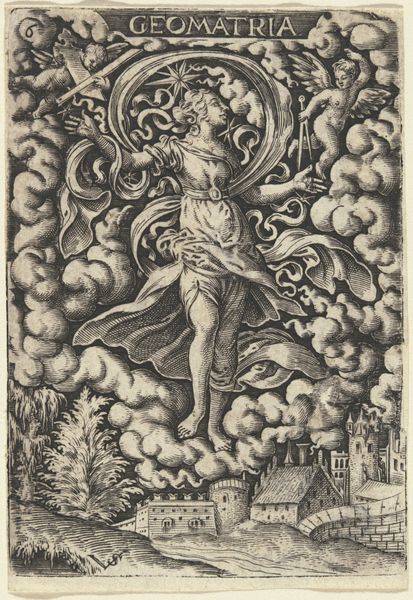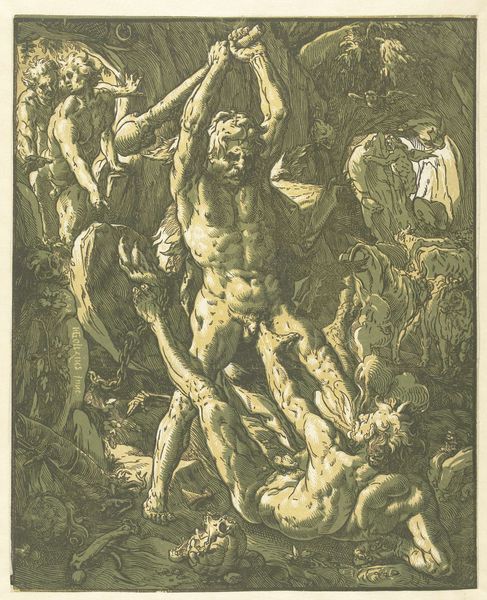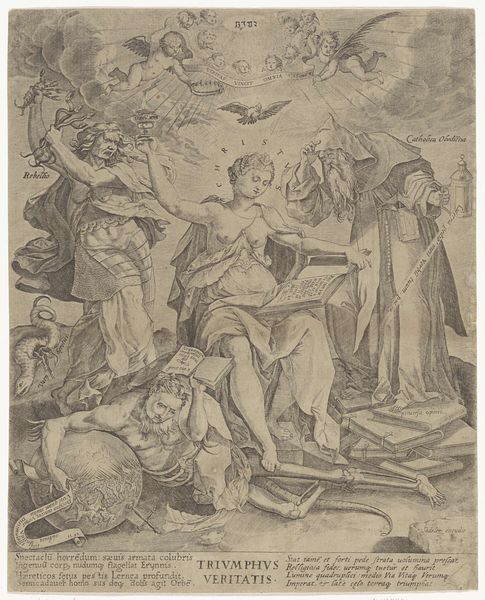
drawing, print, intaglio, engraving
#
drawing
#
allegory
# print
#
intaglio
#
mannerism
#
figuration
#
11_renaissance
#
pencil drawing
#
line
#
history-painting
#
engraving
Dimensions: 247 mm (height) x 190 mm (width) (bladmaal)
Editor: Here we have Gian Jacopo Caraglio's "Allegory of Wrath," a fascinating intaglio print from the 1520s or 30s. It feels like a descent into madness, a swirling composition that overwhelms me a bit. What symbols or recurring motifs do you find particularly striking here? Curator: Well, the writhing serpents are hard to ignore. Think about the serpent's long history – from the Garden of Eden to Asclepius' staff. It is a complex signifier: representing healing, destruction, temptation, wisdom. Note how Caraglio employs the serpent to visualize wrath’s insidious, choking power, not only coiling around figures, but seemingly *becoming* the very fabric of the environment. Editor: It definitely adds to the claustrophobic feeling. Is the serpent the main allegory here? Curator: It's one of several interlocking symbols. Consider the central figure: gaunt, contorted, seemingly consumed from within. Note the figure is astride the bestial creature—the source of the rage. And the swan, awkwardly placed—does it offer an escape? An alternative to the poisonous rage all around? Caraglio is layering meaning here, demanding that we decode it. How do you interpret the central figure's physical state? Editor: The emaciated body really emphasizes the destructive nature of anger. Like it literally consumes you. It's a powerful image, though unsettling. The swan provides a contrast; a symbol of purity? Curator: Precisely! It introduces a counterpoint, a whisper of potential salvation amidst the chaos. Think about it--Mannerist artists often embraced complex allegories. What does this tell us about cultural anxieties and ideals in that period? Editor: I see! It makes you think about the personal struggles everyone was experiencing at that time, reflecting social and religious change. Thank you. Curator: Absolutely, and looking at art this way, through its symbols and cultural echoes, gives us insight into not only the art but into the society and time period in which it was created.
Comments
No comments
Be the first to comment and join the conversation on the ultimate creative platform.
